11,000 dead during peace talks: what we know about Russia's losses in Ukraine by the end of August
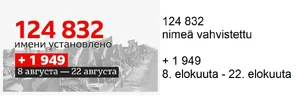 About the article
About the article
- Author, Sergey Goryashko and the correspondents' department
- Place of work,BBC
- August 22, 2025
Using open data, the BBC, together with the publication Mediazona* and a team of volunteers, identified the names of 124,832 Russian soldiers killed during the full-scale invasion of Ukraine. Of these, at least 11,250 people have died since February 11, the date when official negotiations between Moscow and Washington began to end the war in Ukraine.
We included all Russian soldiers killed in the period from February 11, 2025 to the present in this number. In cases where the exact date of death was unknown, we took into account the date of death confirmation in open sources. The real number of deaths during this period will, of course, be higher.
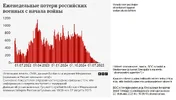
Contract on the day negotiations begin
Since February 2025, official representatives of Russia and the United States have begun regular contacts, including on the settlement of the conflict in Ukraine. On February 11, US Presidential Special Envoy Steve Witkoff flew to Moscow for the first time.
On the same day, 56-year-old native of the Bashkir village of Staroyantuzovo Ranif Fazylov signed a contract with the Ministry of Defense. The next day, for the first time since Donald Trump returned to the White House, the Russian and American presidents spoke on the phone.
Apart from his military service in Orenburg in 1989-1991, Ranif Fazylov had no connection with the army - he studied at school for eight years, graduated from college, returned to his native village, worked on the Pobeda collective farm, and later "
worked in various organizations " in the Sverdlovsk region and Bashkortostan.
In the last years before going to the front, Fazylov worked as a driver. However, he never had a driver's license - at least that's what he will tell the court.
In 2019, Fazylov got into an accident while driving a ZIL - he did not notice a Seat overtaking him and began to change lanes without using the turn signal. Dodging a collision with a truck, the car flew into a ditch and overturned, the passengers - two adults and a child - were injured. In the lawsuit against Fazylov, the Seat driver claimed that due to the injuries sustained in the accident, his daughter was unable to enroll in university.
In 2020, the Birsk Interdistrict Court of Bashkortostan
found Fazylov guilty in a case of violating traffic rules, which resulted in the infliction of serious bodily harm to a person through negligence. Fazylov avoided a prison colony; the court only sentenced him to one and a half years of restricted freedom and banned him from driving for three years.
By the time the man decided to go to war, those restrictions had already expired. Russia's full-scale invasion of Ukraine had been going on for almost three years.
Fazylov went to fight as part of the 80th Guards Tank Regiment. He was given the call sign Gamsa. At least, that is what is in the messages from
Fazylov's wife and
sisters - since the end of April, they have been trying to find out at least something about the man's fate by sending his photos to Telegram chats for missing persons.
Fazylov last contacted his family on March 30. An obituary published on the village library website said that Fazylov died on April 1 near the village of Novoandreyevka in Donetsk Oblast. The Russian army has not yet managed to capture the frontline village of Novoandreyevka, but last week the Ukrainian authorities
announced the mandatory evacuation of its residents. The BBC, using open data, was able to find 173 more soldiers of the 80th Guards Tank Regiment who died in addition to Fazylov.
The man's obituary on the website of the Bashkir Malonakaryakovskaya rural library says that he had no children. In the section "Heroes of the SVO of the Mishkinsky District" on the library's website there are already 123 obituaries. Bashkortostan continues to hold first place among Russian regions in the number of people killed in the war with Ukraine - 6,117 people as of August 22.
(HUOM: tämä on interaktiivinen kartta eli siitä näkee tietyn Venäjän oblastin todennetut tappiot kun vie hiiren kursorin ko. alueen päälle. En ala kopioimaan numeroita jokaisen alueen osalta, mutta kuvasta näkee karkeasti sen miltä alueelta tappiot ovat eli tummempi väri on suurempi numero ja vaalea väri pienempi numero)
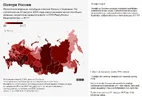
Fazilov went to war from the village of Chebykovo in the Mishkinsky District of Bashkortostan. The population of Chebykovo is 385 people, of which 100 are men aged 18 to 60. The BBC knows of at least
two more natives of the same village who died in the war. Nothing was written about them in the Chebykovo House of Culture public page on VKontakte. But they publish poems in support of the war in Ukraine and constantly
report on how local residents weave camouflage nets for the military.
Main trends
27% of the fatalities we identified were volunteers. By comparison, in 2023, their share was only 14% of the total number of casualties.
Former prisoners account for 14.5% of those killed in the war. The share of this category is gradually decreasing in the overall report - this is due to the fact that now investigators and lawyers are obliged to notify the accused and suspects about the possibility of avoiding criminal punishment if they sign a contract with the Russian army. Since in such cases people are not formally found guilty by the court, we classify them as volunteers, not convicts.
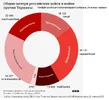
About 11% of the dead were mobilized. However, the actual losses among them may be significantly higher, since obituaries do not always indicate the exact status of the deceased. Because of this, it is often impossible to determine whether a person went to the front voluntarily or was mobilized.
Russia also continues to suffer losses among officers - a total of 5,621 since the beginning of the invasion until August 22. Among them are 12 generals (including Interior Ministry Major General Andrei Golovatsky, who was sentenced to 8.5 years in prison).
On August 17, another general, deputy commander of the Sever group, Esedulla Abachev, was wounded in the war. According to the head of Dagestan, Sergei Melikov, Abachev was "in one of the border regions." The general was hospitalized, doctors assessed his condition as serious. The Main Intelligence Directorate of Ukraine reported that Abachev was wounded on Sunday, August 17. The GUR claimed that Ukrainian troops hit a Russian convoy on the Rylsk-Khomutovka highway in the Kursk region, and the general's arm and legs were amputated as a result of the wound. Abachev fought in Ukraine since the beginning of the full-scale invasion, and in April 2022, President Vladimir Putin awarded him the title of "Hero of Russia."
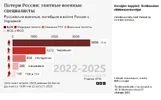
Four generals were killed in the first four months of the war. During that period, many commanders were close to the front lines, trying to speed up decision-making by their presence, compensating for logistical problems, operational planning shortcomings, and the lack of reliable secure communications.
By the summer of 2022, the Russian military had managed to partially establish a supply and communications system - generals and other high-ranking officers were transferred to rear areas, and over the next year we did not record any confirmed cases of deaths of senior officers.
In the summer of 2023, when the Ukrainians received long-range artillery systems from their Western allies, Russian generals began to die in pinpoint strikes. By the end of 2024, a new trend emerged — generals were killed as a result of assassination attempts — for example, Igor Kirillov, the head of the radiation, chemical and biological defense troops
, was killed in Moscow . A scooter packed with explosives was remotely detonated at the entrance to the general’s house as he was walking out to his waiting car.
Overall assessment of Russian losses
The real scale of losses is obviously much higher than those recorded in open sources. According to estimates of military experts we interviewed, an analysis of Russian cemeteries, memorials and obituaries reflects only 45% to 65% of the total number of victims.
One reason is that the bodies of many of the soldiers killed in recent months may still be on the battlefield. Removing them would risk further casualties, leaving them vulnerable to drone attacks.
Taking into account the above estimates, the death toll on the Russian side could range from 192,049 to 277,404.
The total number of losses increases significantly if we include in the calculation the military personnel who participated in the battles against Ukraine as part of the formations of the self-proclaimed Donetsk and Lugansk People's "Republics".
Since December 2022, the DPR authorities have stopped publishing information about losses, and the LPR has never disclosed them at all. Having studied the available obituaries and reports of LPR/DPR fighters who have not been in touch for a long time, we came to the conclusion that by the end of September 2024, the number of people killed in these formations could have been between 21,000 and 23,500 people. Later, we began to count killed LPR/DPR fighters as foreigners in the Russian army.
Thus, based on the collected data, it can be assumed that the total number of deaths among pro-Russian forces is in the range of 213,049 to 300,904 military personnel.
We are continuing to collect information about service personnel who have died. If you would like to share information on this topic, please email
[email protected].
How we count
In Russia, new names of the dead and photographs of funerals are published every day. Most often, the names are given by the heads of Russian regions or representatives of district administrations, local media and educational institutions where the dead previously studied, as well as relatives.
The BBC, Mediazona and a team of volunteers are studying this data and adding it to the list we have been keeping since the start of the Russian invasion of Ukraine.
We consider a publication in a Russian official source or media outlet, publications by relatives or posts in other sources, if they are accompanied by photographs of the burial, as confirmation of death.
We determined the branches of the armed forces based on reports of where the deceased served or on the insignia on the uniform. Mobilized personnel, volunteers, and prisoners are not separate branches of the armed forces, but we separate these losses into a separate category to compare them with the losses of professional (contract) units of the regular army.
* The publication "Mediazona" has been recognized as a "foreign agent" by the Russian authorities.
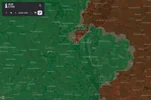
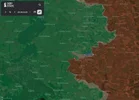
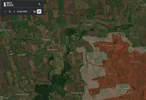

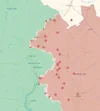
 Käyttörajoitteet ja tavaran riittävyys on ihan eri asioita.... Jos nyt on annettu vaikka " yksi kpl. ohjus. USA." niin käyttäjä saa ite valita mihin se laitetaan
Käyttörajoitteet ja tavaran riittävyys on ihan eri asioita.... Jos nyt on annettu vaikka " yksi kpl. ohjus. USA." niin käyttäjä saa ite valita mihin se laitetaan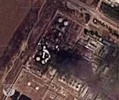

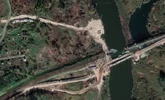







 Yhdysvallat on hyväksynyt 3350 ERAM-ohjuksen myynnin Ukrainalle, joiden kantama on 241–450 km, kertoo WSJ. Ohjukset toimitetaan Ukrainan asevoimille kuuden viikon sisällä Pentagonin hyväksynnästä. Paketin arvo on 850 miljoonaa dollaria, ja suurin osa kustannuksista katetaan Euroopan liittolaisten toimesta.
Yhdysvallat on hyväksynyt 3350 ERAM-ohjuksen myynnin Ukrainalle, joiden kantama on 241–450 km, kertoo WSJ. Ohjukset toimitetaan Ukrainan asevoimille kuuden viikon sisällä Pentagonin hyväksynnästä. Paketin arvo on 850 miljoonaa dollaria, ja suurin osa kustannuksista katetaan Euroopan liittolaisten toimesta. preparations for a massive missile-drone strike on Ukraine:
preparations for a massive missile-drone strike on Ukraine: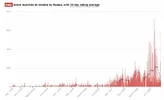

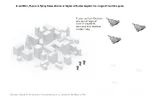
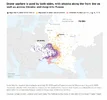

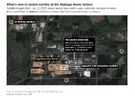

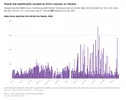

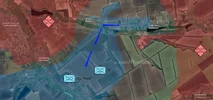
 . Kysyn vaan mitä rauhansopimusta
. Kysyn vaan mitä rauhansopimusta
